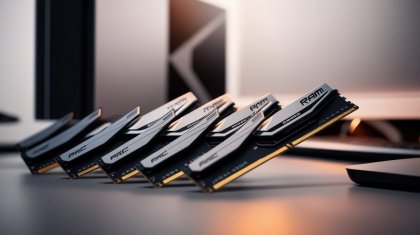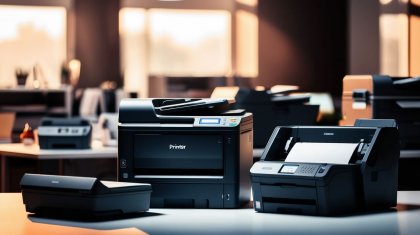Thinking of changing your graphics card to enhance your gaming zone? Those frame rates aren't as amazing as you'd like them, or that new game you've been itching to play calls for some real visual oomph. Whatever, a new graphics card is one of the best upgrades you can provide for your PC. In addition, it is not as daunting as you might believe.
Welcome aboard! This is your simple, systematic guide to installing that new-fangled, shiny GPU on your machine. We will cover everything, from choosing the ideal card to booting and running it. Ready to begin? Let us go!
First Things First: Choosing Your Weapon (The Graphics Card!)
You'll need a graphics card before you even think about cracking open your PC case! There are just so many, it's overwhelming. Do you need a graphics card for gaming on the PC or one for creative pursuits? Do you need a behemoth 5090 graphics card, or do you manage on something more middle-of-the-road, like a 3060?
This is where research comes in, literally, like gold. You'll have to include your cost, games or software you'll play on them, and system specs already present (particularly power supply!). Comparison sites for graphics cards, comparing ratings and tier lists, will be helpful in such a case. Performance graphics card ranking will also come in handy for research.
Once you've decided to buy, there are plenty of good sites to purchase the graphics card online. You can buy a video card online from authorized retailers if you need NVIDIA graphics cards or AMD Radeon RX graphics cards. Just make sure that you're buying from an authorized retailer!
Pro Tip: Remember to consider the physical dimensions of the graphics card! Some high-end GPUs are beasts and won't fit in smaller PC cases. Measure twice, buy once!
Getting Your Tools (And Psyched Up!)
Okay, you've got your new shiny graphics card sitting on your desk in front of you. Yay! Before you start unscrewing the place apart, let's prepare our tools. You'll need:
A Phillips head screwdriver: The generic one you likely have lying around.
An anti-static wrist strap (optional) keeps static electricity from killing your components. It's not much to pay for peace of mind.
A clean, well-lit workspace: You don't want to misplace little screws in some dark crevice!
Your PC's user manual (helpful but not strictly necessary): This can instruct you on the layout of your motherboard and case.
Get some futzing going on in your noggin. It's Legos, but with more cable and a little TLC!
Time to Roll Up Your Sleeves! (Opening Your PC)
Okay, time to count!
Shut down your PC entirely: Not sleep mode! Make sure it is turned off dead.
Unplug everything: Power cord, monitor cables, USB devices – the lot!
Drag your PC to your workspace. Place it on a surface without carpet to reduce the risk of static even more if possible.
Open up the case: Usually this involves removing a set of thumbscrews or regular screws at the back of the case and pushing off one of the side panels. Consult your PC's manual if you're unsure.
Installing the New Beast!
Now, the fun part – installing your new graphics card!
Place the new graphics card in the PCI-E slot: Align the slot on the motherboard with the card's connectors.
Push the card firmly into the slot: You should hear a click as the clip on the PCI-E slot snaps into place. Don't push! If it doesn't slide in easily, double-check that it's aligned properly.
Screw the card into place: Replace the screws at the rear of the case that hold the card in position.
Connect power cables (if needed): If your new graphics card needs to be powered by something other than the card, connect your power supply's cables. Please make sure they are in there correctly. Your graphics card manual includes instructions on how to locate the correct connectors.
You're nearly done!
Buttoning Up and Turning On
Put the side panel back onto your PC case: Put it back where it was removed.
Reconnect all your peripherals again: Monitor, keyboard, mouse, etc.
Insert the power cord.
Take a deep breath and press the power button now!
Software Side of Things: The Graphics Card Driver
Your PC should now start up, though you might find that the resolution is incorrect or everything is bizarre. That is because your OS is likely loading a default driver. You need to use the proper graphics card driver if you want the full potential from your new card.
Update your drivers: Go to your graphics card manufacturer's website (NVIDIA or AMD). Find the drivers or support section and download the latest drivers for your specific graphics card and OS.
Install drivers: Run the downloaded executable file and follow instructions. This should involve checking a license agreement and choosing an installation option (express is ok).
Restart your computer: This is typically required for the new drivers to take full effect.
Once your PC has been rebooted, you should be viewing your desktop in the correct resolution and ready to take advantage of the improved performance! If you experience such a symptom, you can even test to see if you can get your graphics card fans to stop spinning, as it's usually a problem with either the power or the drivers.
What is a graphics card used for?
A graphics card (or video card or GPU—Graphics Processing Unit) is an internal component within your computer that renders images, video, and animation for display on your monitor. It takes data from your CPU and converts it into what you see.
What graphics card do you use for a PC?
The "best" graphics card entirely depends on your needs and how much money you can spend. You may opt for the newest NVIDIA graphics cards or high-end AMD Radeon RX Graphics Cards for the best gaming. For everyday gaming, an in-between one may do. Sources of graphic card comparison and a graphic card tier list will help.
Does a 32GB graphics card work for gaming?
32GB of Video RAM on a graphics card is utterly insane and much more than sufficient for even the most stressful game currently released (as of 2025). This would be on genuinely high-end or professional-grade graphics cards.
What graphic card is best?
Again, that is highly subjective. For best-of-the-best 2025 performance, consider cards like the 5090 graphics card (if it comes out) or AMD's best. A 3060 or other mid-range cards might be best for value. Look at graphics card rankings and comparison websites.
How much does a PC graphics card cost?
Graphics card costs start at less than $100 for budget cards and reach over $1000 for gaming GPUs at the high end. The price is based on performance level, VRAM, and company. You can buy a graphics card online at any cost.
Does Intel make or sell graphics cards?
Intel makes and sells discrete graphics cards under the Intel Arc brand. It also bundles integrated graphics with most of its CPUs.
How much is the Intel 630 graphics card?
Intel HD Graphics 630 is integrated graphics on older Intel processors, not a dedicated graphics card with a different cost. You get it with the processor.
What graphics card is best for Intel?
If you are wondering if you should use a dedicated graphics card with an Intel CPU, Intel competitor NVIDIA, and AMD graphics cards work with Intel processors. There is no type or brand "best" for Intel CPUs. It will depend on how powerful the CPU and the graphics card are.
Conclusion
Installing a new graphics card will look daunting at first, but with these instructions, you can upgrade your PC and experience a fantastic performance boost. Whether you bought a graphics card from an online vendor to play PC games or a laptop graphics card (though placing graphics cards inside notebooks typically is impossible or much more complicated), finding the right card and installing drivers is the same.
So go for it, unleash the power of this new graphics card, and treat yourself to those stunning, silky-smooth graphics! Game on (or system build!) In addition, do not forget to buy a video card online when the time is right for your next upgrade!








